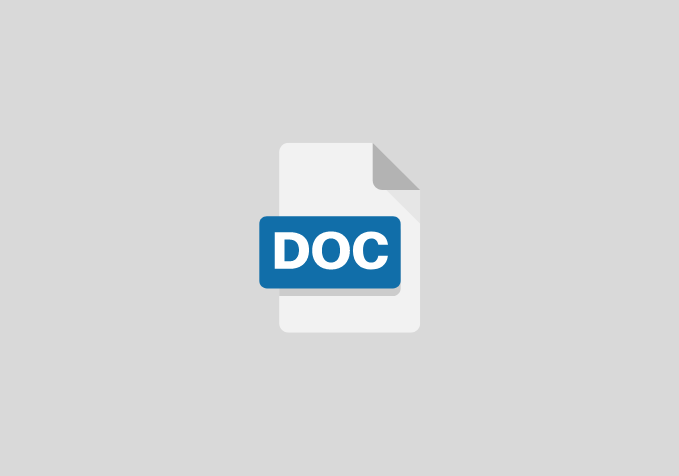Computerization of Student Examination Result ( a Case Study of Kogi State Polytechnic, Lokoja )
CHAPTER ONE
AIMS AND OBJECTIVE
The main aim of this study is to create a program that will allow for easy examination i.e. result recording system in the institution (i.e. Kogi State Polytechnics); it shall:-
- Study and identify the limitation of the existing system.
- Determine the deficiency in the package and hardware being used.
- Reducing time and labour required in the existing system.
- Facilitate accuracy and data security during and after recording.
- Reduce to minimum or eliminate entirely, the problems encountered during updating of examination recorded.
The main objectives of this research work is to determine what the meaning of examination is and to develop a computer program using visual basic that could be used for documentation of examination result recording.
CHAPTER TWO
LITERATURE REVIEW
The application of computer technology in information handling has become prevalent in most developed countries that is, it relevance is no longer questioned. It is no doubt that virtually everything is waiting to be computerized or automated.
Development of computers were made in a bid to obtain a reliable, maintainable, effective, efficient and yet a portable computer without the reduction in prices.
Examinations are features of the school program which make demand on lecturer, indeed, examination influences much of the school’s curriculum and there are specific period assigned to them. In every institution or school activities end up in examination. These are formal occasions with strict rules regulating behavior, lecturers warn students to prepare for them.
Since examination has become an important yardstick for accessing the effectiveness of learning and lecturing efforts, this project work will close with a brief conversation of them, we shall focus our attention on :-
- The nature of present day examinations, stressing their inappropriate for the promotion of lecturing/learning.
- How a more understandable form of examination could be achieved.
CHAPTER THREE
RESEARCH METHODOLOGY
This project work was carried out with some relevant research tools such tools include the interview method of data collection, the questionnaire, observation and sampling method in order to gain an insight into understanding problem with the existing system in the school.
Data collection, which is a process of gathering facts or collection of data related to the proposed system of study, is rather carried out in two major ways, that is, the primary and secondary data collection methods done in order to discover the problem with the existing system.
CHAPTER FOUR
SYSTEM ANALYSIS AND DESIGN
ANALYSIS OF THE EXISTING SYSTEM
The student examination result recording of Kogi State Polytechnic, Lokoja in Department of Math/Statistic and Computer Science is usually performed by the department’s exam officer under the direct supervision of the Head Department (HOD).
This achievement through the process of issuing a form (score sheet) to each course lecturer which they used to record the score or mark for each student in their respective course offered.
After the various course lectures has filled in the score for each student according to the number of the students in a particular class, the form is submitted to the head of Department (HOD). The form is again submitted to examination and recording office for final compilation.
CHAPTER FIVE
SUMMARY CONCLUSION RECOMMENDATION
SUMMARY
The project which is mainly developed for examination result recording will in addition offer security to data files, process information and save the result processing unit of Kogi State Polytechnic especially the department of computer science enough time and urgency grantee-of result pasting. The trouble of keeping bulky files and using calculators which may be mis-calculated also alleviate the problem of information storage and retrieval.
The project will be economically preferable to the existing system. As it reduces the number of personnel requirements of the old system.
CONCLUSION
Conclusively, a global information super highway is the trend in this generation; the use of modern computer programming language; i.e. visual basic is therefore the only medium of achieving the information requirement of this growing generation this is be cause of its ability to promote effectiveness and efficiency in information handling in various operation giving way to a more timely and accurate information, which is the backbone for management’s decision making.
RECOMMENDATION
As a result of the effectiveness and efficiency of this new system, we therefore recommend that the school (Kogi State Polytechnic) should adopts or change from old system to the proposed (new) system due to the following reasons:-
- It has high processing speed of computation
- The error encountered in the old system has been brought to it bears minimum.
- It is more efficient and effective, can store students results and generates output as much as possible
REFERENCES
- Christopher M.H & Chris F.K., (Sept. 1994); MIS Quarterly, vol. 18 n.3, p-251 – 275, Computerized Loan Organization Systems; An Industry Ease Study of the Electronic Markets Hypothesis.
- Duncan D.J. & Whetstone J. (1996), p. 25-36, Is On-Line Bookshopping Ready for the Internet? Information Systems Management.
- Guisbery M.J. (1981) p. 459-478, Diagnosis of MIS Implementation Failures; Promising Results & Unanswered Questions, Management Science.
- Han. K.S., & Noh, M.H. Journal of MIS Research (1998) p. 103-124. An Analysis of Major Failure Factors to Reduce the Dysfunction of On-line Shopping.
- Ives B., & Olson M. (1984), User Involvement & MIS Success. A Review of Research Management Science 30, 586-603.
- Kalokota R. & Whinston A.B. (1996), Using Client Server Broker Architecture For Intranet Decision Support p. 171-192
- Kiely T., (1997), The Internet”; Fear & Shopping Cyberspace. Harvar Business Review p.13-14
- Ravo K., & Andraw B.W. (1997), E-commerce, A Manager’s Guide, Addition-Wesley Longman Publishing Co, Inc., Boston M.A.

